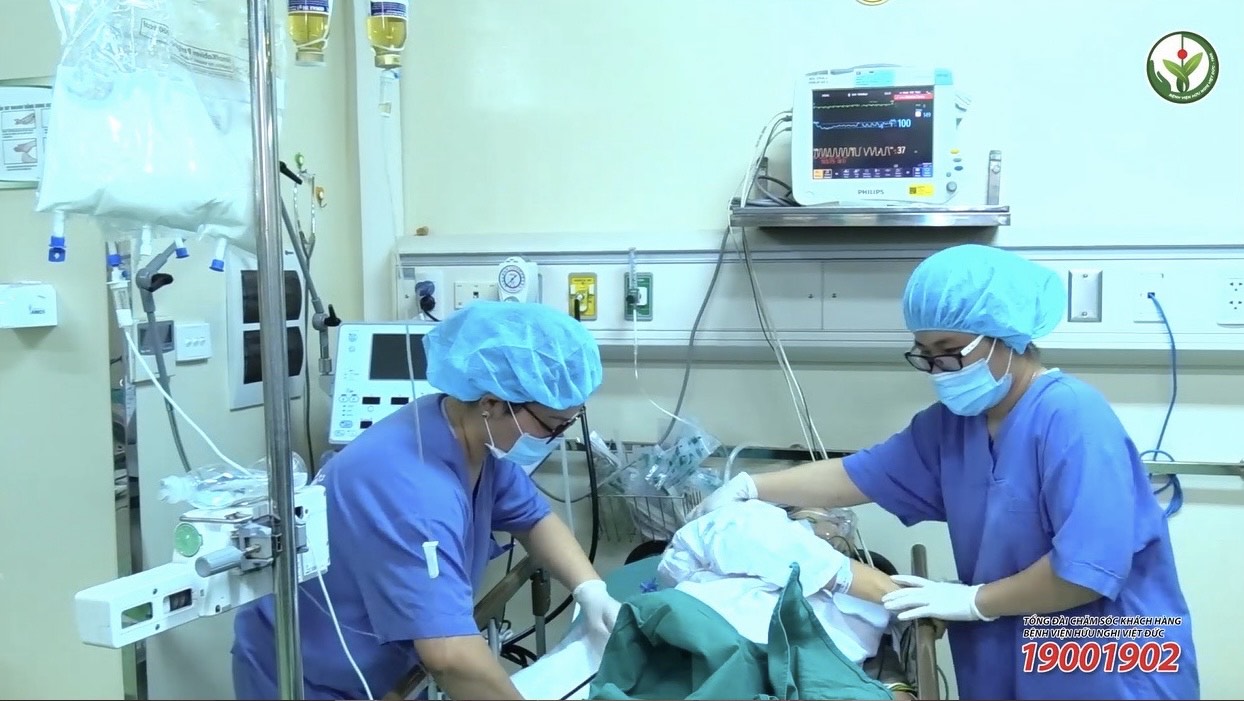Viet Duc University Hospital: Things the patients need to notice on the day of surgery
10/03/2021 13:35
During that day, the patient needs to continue fasting according to the instructions of the medical staff, is allowed to take only the medication under the prescription of the surgeon, anesthesiologist. The patient has also a oral hygiene, dress change (no underwear) before going to the operating room which is prepared a clean surgical and marked on it.
Medical staff will encourage the patient to get out all anxiety about the upcoming surgery. The patient will be led directly to the operating room by medical staff, welcomed by another staff there in preparing the administrative process before the surgery by asking a few questions, checking the necessary information on their medical record to ensure complete it properly. After that, they continue to check the identification of the patient as well.


In the operating room:

If the patient wishes, a family member can come along to the entrance of the operating room. In case of child, both mother or father are allowed to come along for checking all information at the reception area.

The operating room staff will once again confirm the patient’s identification and medical record. If the patient has any questions, don’t hesitate to ask.
While in the operating room, the patient will be assisted to move from a stretcher to the operating table.
Usually in the operating room will include surgeons, one assistant surgeon if necessary, anesthesiologists, nurses, as well as other staff members. The patient will be under general anesthesia/regional anesthesia (depending on the types of surgery) before the surgeon arrives.
Vital signs such as blood pressure, heart rate, oxygen saturation, and breathing rate will be monitored throughout the surgery. The surgical team will arrange intravenous fluids, perform drugs and other procedures such as urinary catheterization, skin cleaning in the surgical site …
Anesthesia:

Patients will be general anesthesia/anesthesia as indicated. There are 3 basic types of anesthesia/anesthesia:
General anesthesia: General anesthesia is suitable for most surgeries. This helps the patient to completely lose awareness, movement and pain sensation.
Regional anesthesia: will be indicated by surgeon or anesthesiologist. Regional anesthesia includes: Epidural, spinal anesthesia, local IV of the upper and lower extremities. Only part of the body (such as the arms and legs) has no sensation and the patient will remain awake.
Local anesthesia: Local anesthesia will be indicated by surgeon or anesthesiologist. The surgical site that is operated will be affected by the dose of local anesthetic injection.
After surgery:
Depending on each case, the patient can be transferred to the recovery room to continue monitoring and treatment or will be transferred to the patient ward.
In the recovery room, the patient will be checked blood pressure, pulse, breathing rate and monitored continuously until the condition is stabilized. When the patient is fully awake, the pain is controlled and the patient’s condition has been stabilized, they will be transferred to the patient ward with nurse and family members (if any).
When returning to the patient ward, the nurse will help the patient stabilize in bed, measure the vital signs (blood pressure, pulse, breathing rate, oxygen level and temperature), check the surgical site, the fluid, drainage … Ensure safety for them.











